This article was medically reviewed by Jonas DeMuro, MD. Dr. DeMuro is a board certified Pediatric Critical Care Surgeon in New York. He received his MD from Stony Brook University School of Medicine in 1996. He completed his fellowship in Surgical Critical Care at North Shore-Long Island Jewish Health System and was a previous American College of Surgeons (ACS) Fellow.
There are 7 references cited in this article, which can be found at the bottom of the page.
This article has been viewed 142,412 times.
A “cyst” is a closed or “sac-like” structure that is full of semi-solid material, gases or liquid. Sebaceous cysts occur due to the buildup of sebum, an oily substance that keeps your skin and hair moisturized. Most sebaceous cysts are found on the face, the neck, the back, and rarely, in the genital area. Though they grow slowly and are usually painless, they can be uncomfortable and show up in embarrassing spots.[1] You can get the cyst medically removed by a doctor or use home treatments to encourage the cyst to heal and disappear.
Steps
Getting the Cyst Medically Removed
-
1Note if the cyst has become inflamed and irritated. Most sebaceous cysts are harmless and do not require treatment. But if the cyst becomes irritated or inflamed, you may consider going to your doctor so they can remove it for you safely.[2]
- Check if there is a tiny blackhead in the center of the cyst. The cyst may also be red, inflamed, and tender.
- You should also note a thick yellow fluid that comes out of the cyst when you press on it. The fluid may have a foul smell.
-
2Let your doctor examine the cyst. If you think the sebaceous cyst is infected, you should allow your doctor to examine it and avoid touching it or draining it on your own at home.[3]
- Trying to drain the cyst at home can increase your risk of having the cyst appear again, as you will not be able to remove the sac completely. Draining the sac on your own can also increase your risk of infection and scarring in the area around the cyst.
Advertisement -
3Allow your doctor to drain the cyst. This is a fairly easy procedure and can be done in your doctor’s office. They will first apply a local anesthetic on the cyst so you do not feel the procedure.[4]
- Then, she will make a small incision in the cyst and drain the contents by “expressing” the fluid. “Expressing” means she will apply a small amount of pressure on the cyst to push the fluid out. The fluid in the cyst may appear yellow, cheesy looking, and have an unpleasant smell.
- Your doctor may also remove the cyst wall to prevent the cyst from appearing again. This is considered minor surgery and your doctor may need to give the area sutures once the cyst wall has been removed, depending on how big the cyst is.
- Removing the cyst is generally done after the acute infection has subsided, to prevent recurrence of an infected cyst.
-
4Make sure the area around the removed cyst does not get infected. Your doctor should give you instructions on how to treat the area around the removed cyst so it does not get infected and stays clean. They should put a bandage on the removed cyst so it can heal and instruct you to apply over-the-counter ointment to keep the area clean.[5]
Doing Home Treatments on the Cyst
-
1Apply aloe vera gel to the cyst. Astringent herbs like aloe vera can be used to “pull out” the protein keratin, sebum, and other fluids in the cyst.[6]
- After applying the aloe vera, rinse the area with warm water. Do this three to four times a day. You can also apply castor oil in the same manner, repeating the application three to four times a day.
-
2
-
3
-
4
-
5Use bloodroot on the cyst. Bloodroot is used in Native American medicine to treat skin disorders, including cysts. Mix ⅛ teaspoon bloodroot powder with 2 tablespoons castor oil and apply it to the cyst with a Q-tip.[13]
- Only use a small amount of bloodroot on skin with no breaks or cuts. Do not swallow any bloodroot or use it around your eyes, mouth, or genital area.
-
6Apply a warm compress on the cyst. Use a clean washcloth soaked in warm water on the cyst. Apply the warm compress at least four times a day for 10 minutes at a time.
- You can also soak the washcloth in chamomile tea, ½ cup water and ½ cup chamomile tea steeped for 10 minutes, and apply it to the cyst.
- Alternatively, you can soak the washcloth in diluted apple cider vinegar, with equal amounts of apple cider vinegar boiled in water, and apply it to the cyst.
References
- ↑ http://www.mayoclinic.org/diseases-conditions/sebaceous-cysts/basics/definition/con-20031599
- ↑ https://www.mayoclinic.org/diseases-conditions/sebaceous-cysts/symptoms-causes/syc-20352701
- ↑ https://my.clevelandclinic.org/health/diseases/14165-sebaceous-cysts
- ↑ https://my.clevelandclinic.org/health/diseases/14165-sebaceous-cysts
- ↑ http://www.mayoclinic.org/diseases-conditions/sebaceous-cysts/basics/tests-diagnosis/con-20031599
- ↑ http://www.ndhealthfacts.org/wiki/Astringent
- ↑ http://www.anniesremedy.com/chart.php?prop_ID=11
- ↑ http://www.ndhealthfacts.org/wiki/Astringent
- ↑ http://www.anniesremedy.com/chart.php?prop_ID=11
- ↑ http://www.ndhealthfacts.org/wiki/Astringent
- ↑ http://www.anniesremedy.com/chart.php?prop_ID=11
- ↑ http://www.ndhealthfacts.org/wiki/Astringent
- ↑ https://www.mskcc.org/cancer-care/treatments/symptom-management/integrative-medicine/herbs/disclaimer?destination=%2Fcancer-care%2Fintegrative-medicine%2Fherbs%2Fbloodroot
About This Article
To remove a sebaceous cyst, soak a cotton ball in apple cider vinegar and apply it to the cyst 3 times a day to help dry it out. Alternatively, dab some witch hazel on the area with a q-tip several times daily. If that doesn’t get rid of the cyst, try applying some aloe vera gel to pull out the fluids and sebum in the cyst. Once the aloe has dried, rinse it with water and repeat the process 2 more times throughout the day until the cyst is gone. For tips from our Medical reviewer on how to use essential oils to get rid of a sebaceous cyst, read on!
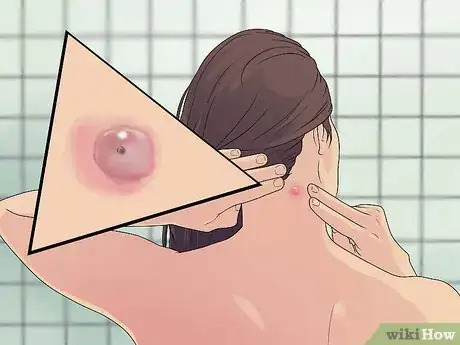

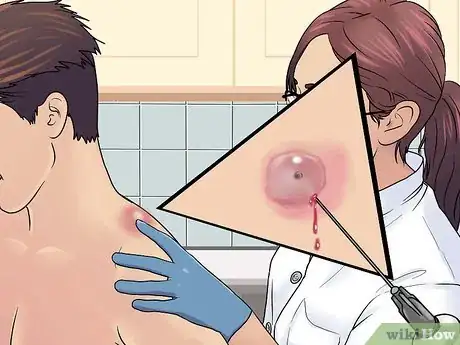
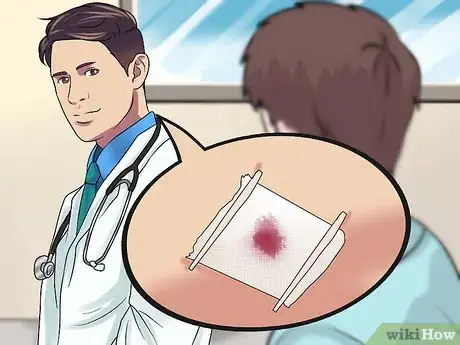
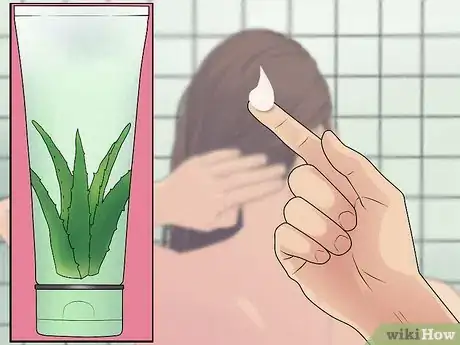


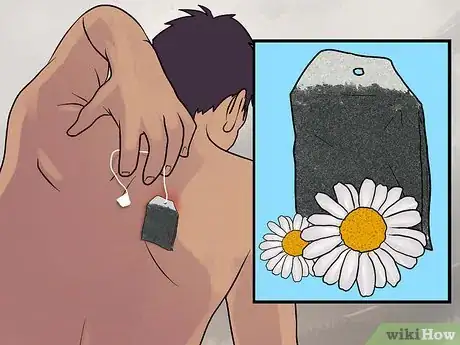
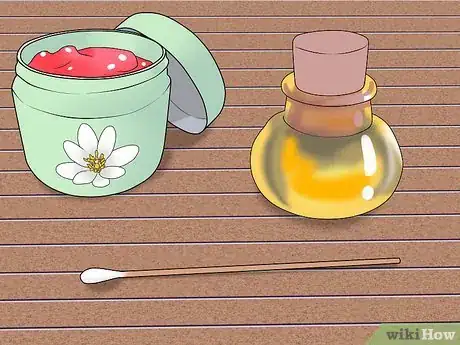
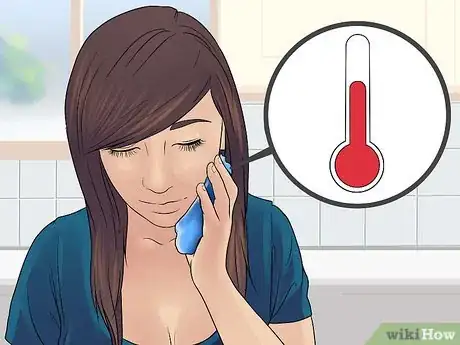

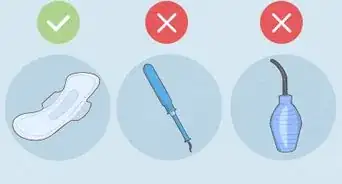



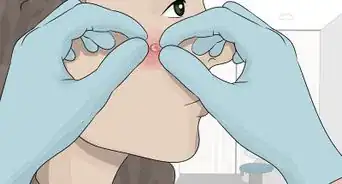
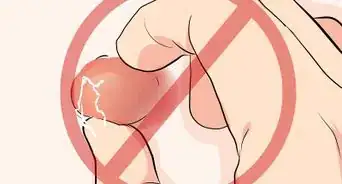

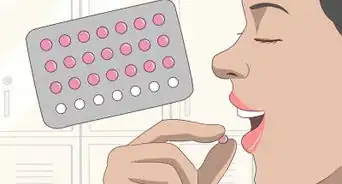
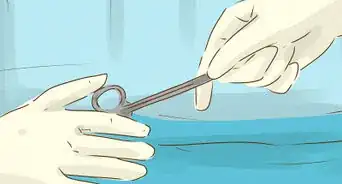
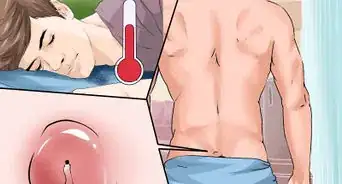

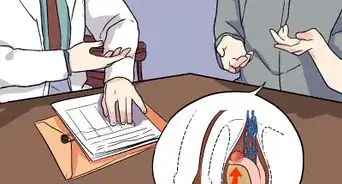
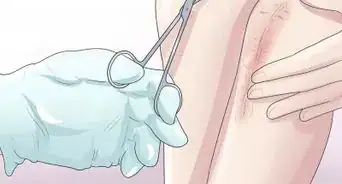







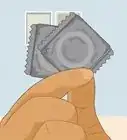
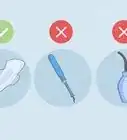

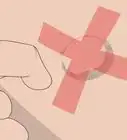



































Medical Disclaimer
The content of this article is not intended to be a substitute for professional medical advice, examination, diagnosis, or treatment. You should always contact your doctor or other qualified healthcare professional before starting, changing, or stopping any kind of health treatment.
Read More...